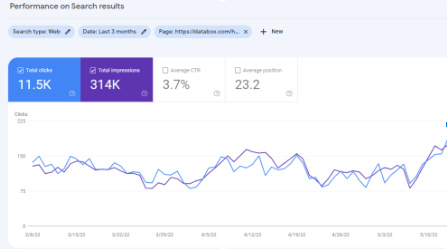In today’s digital landscape, appearing prominently in search engine results is a necessity for any online presence. While the world of SEO can seem complex, mastering Google’s advanced search operators and practical Google search tips provides a powerful toolkit for SEO professionals to conduct essential research and analysis that directly contributes to improving website visibility.
These techniques enable detailed competitor analysis, comprehensive keyword research, and identification of content gaps, all crucial components of an effective SEO strategy. This guide will delve into these powerful Google search techniques, illustrating how they can be applied to enhance your website’s search rankings.
Understanding How Google Search Works
Before diving into specific Google search tips, let’s grasp the fundamentals of how Google Search operates. Google is an automated search engine that constantly explores the web using programs called crawlers (like Googlebot). It works in three main stages:
- Crawling: Google discovers new and updated web pages and downloads their content (text, images, videos).
- Indexing: Google analyses the crawled content, understands what the page is about, and stores this information in its vast database, the Google index.
- Serving Search Results: When someone searches on Google, the system retrieves the most relevant and highest-quality pages from its index based on the user’s query, considering factors like their location, language, and device.
Google’s ultimate goal is to provide helpful, reliable, and relevant information to its users. Understanding this user-centric approach is key to any successful google search strategy.
Supercharge Your Keyword Research with Google Search Tips
Effective keyword research is the cornerstone of any strong SEO strategy. Fortunately, you don’t always need expensive tools to get started; Google itself offers invaluable Google search tips for this process.
One of the best ways to find keywords your audience is searching for is by using Google Suggest, also known as Autocomplete. As you type a keyword into Google’s search field, it populates a list of suggestions. These come directly from Google’s understanding of common searches, confirming their relevance and popularity. These often include longer, more specific “long-tail keywords,” which, despite lower search volumes, are often easier to rank for due to less competition.
https://backlinko.com/actionable-seo-tips
Another helpful feature is the “People also search for…” section at the bottom of search results pages. This provides synonyms and other related keywords that Google considers relevant to your initial query, helping you understand the broader topic and semantic relationships.
For more in-depth data, Google Search Console is an indispensable, free tool. Its Performance Report, under the “Queries” tab, shows the search terms where your site appeared in Google results, along with metrics such as impressions, clicks, and average position. While not every query results in a visit, this data is invaluable for identifying the keywords you are already ranking for and refining your content to better match user intent.
Some experts also advocate for the Keyword Golden Ratio (KGR) technique, a powerful way of using Google for keyword research. This data-driven approach helps find underserved long-tail keywords that can rank quickly by comparing the number of Google results with the keyword in the title to the local monthly search volume.
Google Tricks to Spy on Competitors and Find Opportunities
A crucial part of your google search strategy involves understanding what your rivals are doing well. There are several google search techniques that can help you conduct effective competitor analysis.
The site: search operator is a simple yet powerful tool. By typing site:competitordomain.com into Google, you can see all the pages from that specific website that Google has indexed. This offers a quick overview of their content and site structure.
To detect duplicate content or specific keyword usage on a competitor’s site, you can combine operators like site:competitordomain.com intitle:”search term”. This reveals pages on their site that have a particular phrase in their title.
To identify direct competitors for a specific keyword, use the query “search keyword” -site:yourdomain.com. This tells Google to show results for your target keyword but exclude your own website, leaving you with a clear list of who else is ranking. This is a key google search tip for competitive analysis.
While Google search alone provides insights, combining these Google search tips and tricks with dedicated SEO tools like Semrush, Ahrefs, or Moz allows you to dig deeper into competitor backlink profiles and keyword rankings.
Optimising Content with Advanced Google Search Tricks
Beyond keyword research and competitor analysis, mastering advanced Google search tricks for on-page SEO is vital. This involves optimising individual pages to boost their search visibility.
One fundamental Google search tip is to place your main keywords strategically. Google gives more weight to terms that appear early in your content and especially in your page’s title tag. However, ensure this is done naturally and remains user-friendly; readability trumps over-optimisation.
Crucially, every piece of content on your website should be unique. Google discourages “duplicate or near-duplicate versions of your content,” including titles, meta descriptions, and even product pages. Writing original descriptions, for instance, not only helps with SEO but also strengthens your brand voice. If duplicate content is unavoidable on dynamic pages, use canonical URLs to tell Google which page to prioritize.
Improving your site’s user experience (UX) is another powerful strategy. Google tracks user behaviour like “pogo-sticking” (when users quickly return to search results after visiting your site), which can negatively affect your rankings. Fast loading speeds are also critical, particularly on mobile devices, as Google directly factors this into rankings.
Internal linking is an incredibly effective, yet often underutilised, SEO practice. By adding links from one page on your site to another, you help Google understand your site’s structure, pass authority between pages, and assist in content discovery. Always use keyword-rich anchor text for these links, as it provides Google with clues about the linked page’s content. Internal links can also help Google discover and rank new content faster. You can learn more about this in articles on crawling and indexing.
For images, ensure you use descriptive filenames and alt text. Since Google cannot “see” images in the same way humans do, these text descriptions help search engines understand the image’s content and its relevance to your page.
Implementing Schema markup (structured data) can also enhance your search appearance by enabling rich snippets in the SERPs, which can increase click-through rates.
Finally, focus on publishing high-quality content and regularly updating it. Google values fresh, original, and helpful content. Updating old “zombie pages” (pages with no traffic) or removing them can significantly boost your overall site performance.
Leveraging Google Search Console for Deeper Insights
To truly refine your google search strategy, you need to understand how to search in Google’s own performance data. Google Search Console (GSC) is an essential, free tool that offers a wealth of information about your site’s SEO performance.
The Performance Report within GSC allows you to monitor total clicks, impressions, average click-through rate (CTR), and average position for your keywords and pages. This granular data helps you track the effectiveness of your google search tips and spot trends over time.
https://databox.com/ideas-for-improving-seo-with-google-search-console#k3
The Coverage Report is vital for identifying indexing issues. It shows how many of your pages Google has indexed and highlights any errors preventing pages from appearing in search results, such as 404 errors or noindex tags. Fixing these ensures your valuable content is discoverable.
With Google’s mobile-first indexing, checking the Mobile Usability report is crucial. This report flags any issues that make your site difficult to use on mobile devices, which can impact your rankings. Similarly, monitoring Core Web Vitals – metrics measuring page loading speed, responsiveness, and visual stability – directly impacts user experience and, consequently, your SEO. For more in-depth information on these critical metrics, you can watch Google Core Web Vitals: Everything You Need To Know!.
GSC also allows you to check for Manual Actions or Security Issues that might be penalising your site. Its Links Report provides insights into your site’s internal and external links.
Beyond the Basics: Google Search Hacks and Tricks for SEO
To further enhance your Google search strategy, explore these advanced Google search tricks and commands. These are effective Google search hacks and tricks for SEO.
Google Search Operators are special commands that refine your search queries, allowing you to find very specific information. These Google search commands for marketers are incredibly useful for using Google for keyword research, competitor analysis, or finding specific types of content. For example:
- “exact phrase”: Finds results containing the precise phrase in quotes.
- -word: Excludes results containing a specific word.
- site:domain.com: Restricts results to a specific website.
- intitle:”keyword”: Finds pages with the keyword in the title.
- filetype:pdf: Finds results in a specific file format.
These Google search operators for SEO are powerful. For instance, to find guest posting opportunities, you can use intitle:”write for us” OR intitle:”submit guest post” “your niche”. You can also reclaim brand mentions by using brand monitoring tools to find unlinked mentions of your brand online, then politely ask for a link to your site.
Optimising for Featured Snippets is another powerful tactic. These “zero-click” search results provide answers directly on the SERP. Including a Q&A section in your content can significantly increase your chances of appearing in these coveted spots.
Finally, consider creating industry studies or data-backed content. Research shows these formats are highly effective at attracting backlinks and increasing traffic because they provide unique, citable data that other bloggers and journalists will naturally link to.
Leveraging Google’s Autocomplete for Content Inspiration
Let’s revisit Google’s Autocomplete feature, but this time, specifically for sparking content ideas beyond just basic keyword variations. This is a brilliant, often overlooked, Google search technique to understand real user intent and fill content gaps.
By strategically typing partial queries into the Google search bar, you can uncover exactly what questions people are asking and what related topics they are seeking information on. For example:
- Typing “what is [your topic]?” or “how to [solve a problem]?” and observing the autocomplete suggestions can reveal common user questions (FAQs).
- How to search for using wildcard characters like how * works can show common concepts users are trying to understand related to a specific process or product.
- Appending “vs” or “and” after a brand or product name (e.g., [your brand] vs or [your brand] and) can expose competitor comparisons or related products/services users are interested in.
This approach provides real-time, user-driven insights into potential content ideas. By addressing these specific questions and comparisons in your articles, blog posts, or product descriptions, you directly cater to existing search intent, making your content highly relevant and more likely to rank. This is a fantastic way to develop your Google search strategy for content that truly resonates with your audience.
Conclusion
Navigating the intricacies of SEO requires persistence and a keen understanding of how search engines work. The Google search tips and Google search techniques outlined here, from mastering keyword research and competitor analysis to optimising your content and leveraging Google’s own tools, provide a solid framework for improving your website’s search performance.
SEO is not a one-time task but an ongoing process of learning, testing, and adapting. By consistently applying these Google search tips and tricks, you can significantly boost your online visibility, attract more organic traffic, and achieve higher rankings. Start implementing these insights today, and remember that even small, consistent efforts compound over time to deliver remarkable results. If your rankings are not improving despite your efforts, you might want to look into Why are your Website Rankings Dropping?.









